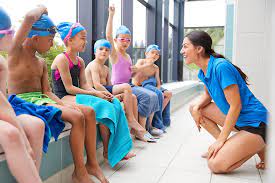Every year, thousands of Australians enjoy our beaches, pools, and rivers. But while water brings joy, exercise, and connection, it also carries serious risks—especially for the untrained. The truth is: accidents in and around water often happen quickly and silently. That’s where a quality water safety course becomes essential, not optional.
Whether you’re a parent, a teacher, a coach, or someone who spends time near water, understanding the real dangers is the first step to preventing them.
Why water safety courses matter more than ever
It doesn’t take a storm or a deep pool to turn fun into tragedy. Many drownings occur in calm, shallow water. Young children can slip unnoticed into backyard pools. Adults overestimate their swimming skills. And in emergencies, even strong swimmers panic.
Taking a water safety course equips people with real-world skills—how to assess risk, respond to an emergency, and provide CPR if needed. It also reinforces one key lesson: prevention is always better than rescue.
Fact: According to the Royal Life Saving National Drowning Report, 281 people drowned in Australia in 2022–23. Most of them were adult males, and a significant portion occurred in inland waterways.
Common water hazards in Australian settings
Australia’s diverse water environments present their own unique challenges. A water safety course prepares learners to understand and adapt to each of them.
Pools
- Slippery surfaces increase fall risks.
- Children can drown in less than 30 seconds.
- Poor supervision is the leading factor in backyard pool incidents.
Beaches
- Rips and strong currents can overwhelm even experienced swimmers.
- Alcohol use at the beach often leads to risky behaviour.
- Unpatrolled beaches significantly increase danger levels.
Rivers and lakes
- Visibility is low; underwater hazards like logs or sudden drop-offs are common.
- Water conditions change rapidly—especially after heavy rainfall.
- Many are located in remote areas, delaying emergency response.
Who benefits most from a water safety course?
Water safety education isn’t just for kids in swimming lessons. It’s essential for people across all stages of life.
Parents and carers
Understanding child-specific drowning risks and learning infant/child CPR can save lives. Knowing how to set pool rules and ensure supervision helps create safer homes.
Educators and childcare workers
Legal obligations and duty-of-care policies often require up-to-date water safety knowledge, especially for school excursions, aquatic centres, or camp programs.
Lifeguards and swim coaches
These roles demand more than swimming skills—they need structured safety training, emergency preparedness, and a calm, confident response under pressure.
Older adults and non-swimmers
With age comes reduced mobility, slower reflexes, and increased medical conditions. Recognising personal limitations and learning safety basics becomes vital.
What will you learn in a water safety course?
Different programs offer different levels of depth, but core components of a high-standard water safety course usually include:
- Risk awareness: Recognising dangerous conditions before entering water.
- Rescue techniques: Safe, effective methods of assisting someone in trouble.
- CPR and first aid: Lifesaving responses to drowning or near-drowning incidents.
- Supervision strategies: Keeping multiple people safe, particularly children.
- Legal responsibilities: Understanding duty of care in aquatic settings.
Courses often blend hands-on practice with scenario-based learning—helping learners build muscle memory and quick reactions.
Stories that hit close to home
In early 2024, a young boy slipped through a pool gate left ajar during a backyard BBQ. His older cousin, just 12 years old, noticed he was missing and pulled him from the water. Because she’d recently completed a school water safety course, she knew exactly what to do—she started CPR while adults called emergency services. That boy is alive today because of her swift action.
In another case, a local footy coach used his training when a player collapsed during a post-game dip in the river. Having reviewed rescue techniques just months earlier, he managed to safely extract the teen and stabilise him until paramedics arrived.
These aren’t news headlines. They’re everyday examples of why this training is critical.
How to find a quality course
Not all training is created equal. Look for courses that are nationally recognised, delivered by qualified instructors, and updated regularly to reflect current safety standards.
Before signing up, consider:
- Who is the course designed for? (E.g. general public, professionals, youth)
- Does it offer practical training or just theory?
- Is it suitable for your local conditions? Coastal and inland risks vary.
- Does it include CPR and first aid certification?
Enrol in a program that suits your environment and your role in it. For those who work with children, courses that align with educator safety standards are a must.
Final thought—prevention is teachable
Water will always be part of Australian life. Beaches, pools, rivers, and dams are where we gather, unwind, and create memories. But they’re also places that demand respect.
The good news? Safety is a skill—and like any skill, it can be learned, practised, and shared. A well-run water safety course can turn hesitation into confidence, and confidence into life-saving action.

